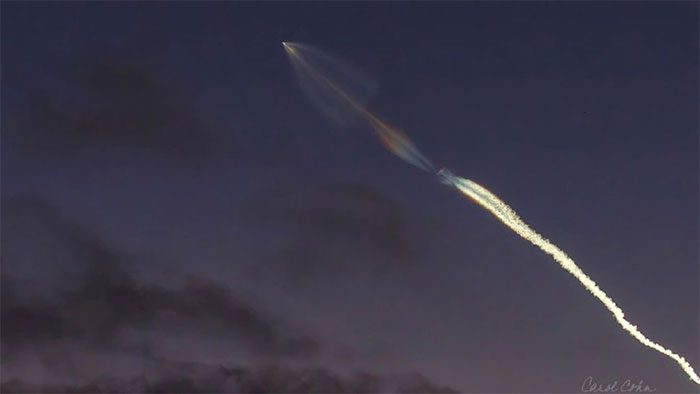A rocket carrying a US surveillance satellite was launched into space, creating a hole in the ionosphere of Earth’s atmosphere.
The launch of the Victus Nox satellite into Earth’s atmosphere was not widely publicized or streamed live, and was only announced 27 hours in advance, surprising the space exploration community, according to Live Science.
Firefly Aerospace, a company contracted by the US Space Force, launched their Alpha rocket from Vandenberg Space Force Base in California on September 14.

The burning fuel of the rocket created a hole in the ionosphere – (Photo: LIVE SCIENCE).
The rocket carried the Victus Nox satellite from the US Space Force. This satellite will conduct a space monitoring mission to assist the Space Force in tracking events happening in the orbital environment.
The rocket unexpectedly drew public attention after creating a massive plume of exhaust visible from over 1,600 km away.
However, after the smoke cleared, a faint red glow remained in the sky, indicating that the rocket had created a hole in the ionosphere in the upper atmosphere surrounding Earth.
| The ionosphere is the upper layer of the atmosphere and the final frontier of Earth. It consists of layers of Earth’s atmosphere at altitudes ranging from 60 to 1,500 km and is an essential part of Earth’s atmospheric structure. It carries information about Earth’s activities within the Solar System and the universe at large. |
This is not the first instance of “ionosphere puncturing” observed this year.
In July, a SpaceX Falcon 9 rocket launch also created a massive blood-red cloud above Arizona, visible from hundreds of kilometers away.
Firefly Aerospace was awarded the contract to launch the Victus Nox satellite in October 2022. The purpose of the space monitoring mission is to demonstrate the US’s ability to quickly deploy satellites into orbit whenever and wherever they are needed without extensive notice, according to Lieutenant Colonel MacKenzie Birchenough, an officer in the Space Systems Command of the US Space Force.



















































